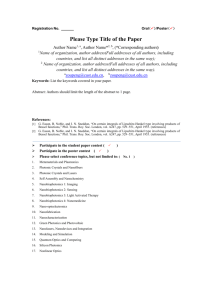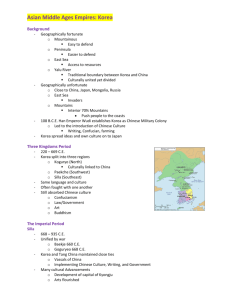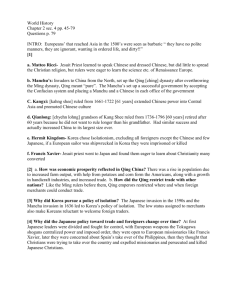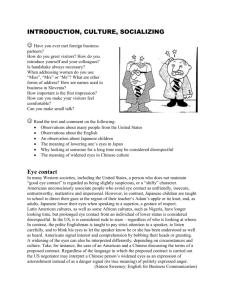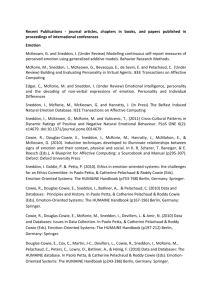US State Dept From Valiance to Valium
advertisement
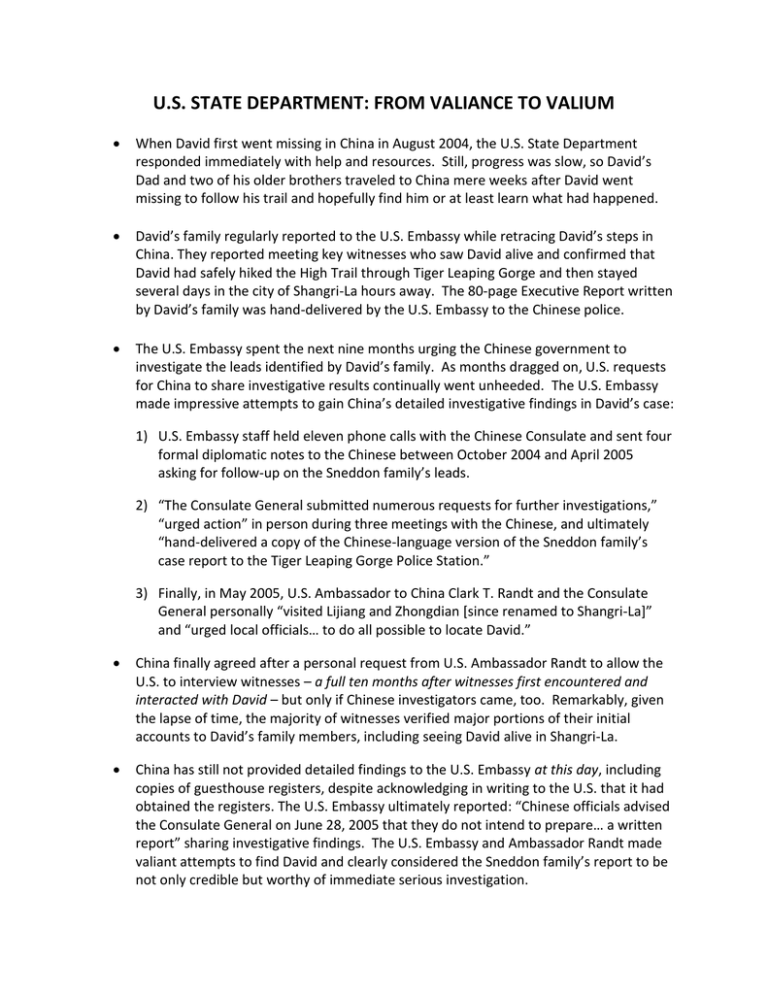
U.S. STATE DEPARTMENT: FROM VALIANCE TO VALIUM When David first went missing in China in August 2004, the U.S. State Department responded immediately with help and resources. Still, progress was slow, so David’s Dad and two of his older brothers traveled to China mere weeks after David went missing to follow his trail and hopefully find him or at least learn what had happened. David’s family regularly reported to the U.S. Embassy while retracing David’s steps in China. They reported meeting key witnesses who saw David alive and confirmed that David had safely hiked the High Trail through Tiger Leaping Gorge and then stayed several days in the city of Shangri-La hours away. The 80-page Executive Report written by David’s family was hand-delivered by the U.S. Embassy to the Chinese police. The U.S. Embassy spent the next nine months urging the Chinese government to investigate the leads identified by David’s family. As months dragged on, U.S. requests for China to share investigative results continually went unheeded. The U.S. Embassy made impressive attempts to gain China’s detailed investigative findings in David’s case: 1) U.S. Embassy staff held eleven phone calls with the Chinese Consulate and sent four formal diplomatic notes to the Chinese between October 2004 and April 2005 asking for follow-up on the Sneddon family’s leads. 2) “The Consulate General submitted numerous requests for further investigations,” “urged action” in person during three meetings with the Chinese, and ultimately “hand-delivered a copy of the Chinese-language version of the Sneddon family’s case report to the Tiger Leaping Gorge Police Station.” 3) Finally, in May 2005, U.S. Ambassador to China Clark T. Randt and the Consulate General personally “visited Lijiang and Zhongdian [since renamed to Shangri-La]” and “urged local officials… to do all possible to locate David.” China finally agreed after a personal request from U.S. Ambassador Randt to allow the U.S. to interview witnesses – a full ten months after witnesses first encountered and interacted with David – but only if Chinese investigators came, too. Remarkably, given the lapse of time, the majority of witnesses verified major portions of their initial accounts to David’s family members, including seeing David alive in Shangri-La. China has still not provided detailed findings to the U.S. Embassy at this day, including copies of guesthouse registers, despite acknowledging in writing to the U.S. that it had obtained the registers. The U.S. Embassy ultimately reported: “Chinese officials advised the Consulate General on June 28, 2005 that they do not intend to prepare… a written report” sharing investigative findings. The U.S. Embassy and Ambassador Randt made valiant attempts to find David and clearly considered the Sneddon family’s report to be not only credible but worthy of immediate serious investigation. U.S. Embassy staff who worked on David’s case were eventually assigned other diplomatic posts. The U.S. State Department then refused to talk to David’s family by citing the “Privacy Act,” telling his parents they could not learn what was being done by the U.S. government on David’s case without David’s written permission. This bizarre Catch-22 misinterpretation of the Privacy Act led Members of Congress to become involved until State Department officials once again agreed to talk with David’s family. The U.S. State Department continues to require David’s family to make Freedom of Information Act (FOIA) requests to gain information about David’s case, though info had previously been openly shared and discussed. The U.S. State Department initially denied the first FOIA by classifying 13 of 14 available documents. A few years later, the U.S. State Department downgraded the documents to “sensitive,” but still required David’s family to make an additional costly FOIA request to obtain the material. Interested Members of Congress requested a briefing from the U.S. State Department on David’s case in November 2014, asking specific questions in writing. The U.S. State Department responded to those questions with brevity in March 2015, leaving many unanswered. David’s family then asked follow-up questions that remain unanswered. Strangely, the U.S. State Department has chosen to advance the disproven theory that David died while hiking Tiger Leaping Gorge, despite the fact that no physical evidence (such as a body or any personal effects) exists to support it, and no eyewitness accounts from the many hikers in a frequently crowded and popular area corroborate it, and the U.S. Embassy spoke to witnesses who had seen David hundreds of miles past the gorge. The “double back” theory that David died in the gorge after visiting Shangri-La has recently found favor with some U.S. officials, but it too is easily disproved. His travel itinerary did not allow David time to reverse-hike the gorge after seeing Shangri-La or he would have missed his airline flight. He told his mother in an e-mail before hiking the gorge that he was excited to next learn more about the local people and culture of Tibet. He set for himself a tight tourism timelime on a limited budget with just enough time to hike the gorge once and then see Shangri-La, which used to be part of Tibet. Starting in 2011, expert voices began emerging with a new and credible theory: that David was most likely taken captive into North Korea. A former Deputy Editor of the Wall Street Journal’s editorial page, a former 20-year Pentagon expert who edited a groundbreaking report about North Korea’s acknowledged program to abduct citizens of foreign nations for espionage purposes, and Japanese experts recognized by the United Nations as specialists in North Korean abduction have all capably advanced this theory. The U.S. State Department has either not sought out the expertise of these reputed individuals, not returned their phone calls, or failed to respond to timely emerging information likely pertaining to David’s case by talking to the experts who obtained it. 15 Unanswered Questions RE: Missing U.S. Citizen David Sneddon 1. The State Department's own report verifies that key witnesses identified by the Sneddon family maintained ten months later both seeing a westerner largely matching the description of David Sneddon, and also talking with the Sneddon family after David went missing. Does the State Department acknowledge that David Sneddon made it through Tiger Leaping Gorge alive? 2. We understand the owner of the Yak Bar restaurant in Shangri-La spoke directly by telephone to Consular Officer Gavin Sundwall of the U.S. Embassy, who spoke and understood Chinese, along with a Chinese interpreter on the line, to inform the Embassy that she had seen and spoken to David Sneddon after he hiked through Tiger Leaping Gorge. The U.S. report does not reference this phone call. Was this call maintained in the State Department's records? Is there a reason it was not included in the final report? Has Gavin Sundwall been questioned about this conversation? Does he recall this conversation? Does he have personal records of this call? 3. The State Department’s recent letter to the Utah and Nebraska congressional delegation mentions that other foreign nationals have gone missing in Tiger Leaping Gorge. Could the State Department provide the details of such cases? We know only of one such case—the case of a young Israeli who hiked more difficult terrain than David Sneddon in an entirely different section of the gorge, but his death was seen by witnesses, and his body was recovered. Are there other cases in which a foreign national hiking the gorge has disappeared without a trace? If so, how many such cases exist? When did they occur? 4. In 2011, a veteran Wall Street Journal reporter asked the State Department how many Americas are considered missing in China. She was told the State Department’s own records attest that no American has disappeared in China without an explanation since U.S.-Chinese relations were normalized under the Nixon Administration. Jeff Moon, a Consulate General in Chengdu (overseeing Yunnan Province) when asked if an American could disappear voluntarily and go underground in China, replied: “No American can go underground in China.” Does the case of David Sneddon remain the only unexplained disappearance of an American in China? 5. We understand the State Department was presented with multiple opportunities by the Japanese government and reputed Japanese NGO’s over the past five years to speak with Japanese officials and experts about the intelligence information potentially applying to missing U.S. citizen David Sneddon. What actions did the U.S. State Department take to look into this information? Can the State Department provide a detailed list of the specific actions taken over the past five years to look into the possibility that a U.S. citizen was taken captive into North Korea? The experts who obtained the information have not been contacted by U.S. officials. 6. Did the State Department confer with other U.S. intelligence agencies regarding the information made available by Japanese experts that potentially applies to the case of David Sneddon? If no, is it normal procedure for the State Department to ascertain alone the veracity or quality of intelligence information presented by an allied government? Does the State Department have procedures in place to refer foreign intelligence information to other agencies for analysis, such as the CIA, NSA or DoD? If yes, could the State Department provide a list of domestic intelligence agencies it has consulted, along with a name of a point of contact within each agency? 7. The State Department’s letter to the Utah and Nebraska congressional delegations mentions there is no classified information available on the case of David Sneddon. Why did the State Department classify 13 reports on David Sneddon when a FOIA request was made on his case? Has the State Department seen fit to declassify the information about David's case, and can the classified reports now be shared in their entirety with David's family? 8. The State Department’s recent letter also mentions that efforts have been made to contact allied foreign intelligence networks to learn if other information may be available in the case of David Sneddon. Could the State Department provide a list of foreign intelligence networks queried, and exactly what information was provided to those networks to make their own inquiries? 9. The following questions were asked to David’s family by a Wall Street Journal writer with extensive experience in Asia: Were attempts made by the U.S. State Department to independently verify the information brought forward from Japanese source(s) within Chinese security forces? Has an attempt been made to query British intelligence services to learn if the Japanese information can be corroborated through another source? Have the South Koreans been made aware of the need to look for information pertaining to David's whereabouts? Have the governments of Sweden or Switzerland that have direct negotiating capabilities with North Korea been made aware of U.S. interest in information about the potential captivity of a young American? North Korea is heavily involved in drug trafficking. Has the DEA or the government of India been queried to learn if any known drug traffickers witnessed the transport and/or kidnapping of a young American through Burma drug trade routes into North Korea? 10. Has the State Department considered the national security implications if a U.S. citizen is in fact being used to train North Korean agents to infiltrate our country? North Korea has used such trained agents in the past to plant bombs on foreign soil. Has the State Department consulted with the CIA and DoD about the possibility of such serious implications? 11. Will U.S. officials sit down with identified experts in David Sneddon's case to discuss in depth the possibility that David Sneddon is being held captive in North Korea? These experts include Chuck Downs, former 20-year Pentagon East Asia Office Deputy Director and world-recognized expert in North Korean abductions and negotiating strategy, or Melanie Kirkpatrick, former Wall Street Journal editorial page deputy editor and recognized expert on the Asian underground railroad, or the Japanese experts who actually obtained information that David may have been handed over to North Korean agents in September 2005 and could provide important historical context to U.S. officials? These experts have publicly and repeatedly stated their belief that known information about David Sneddon's case coupled with their expertise in North Korean abductions strongly suggests David was taken captive by North Korea against his will. 12. The Japanese cabinet-level Minister on the abduction issue has publicly stated his belief that the intelligence information obtained by the Japanese NGO is credible. The NGO responsible for the information has stated its intelligence source(s) have "never been wrong." Does the State Department have reason to discount this intelligence information when high-level Japanese officials find it credible? The NGO is wellregarded worldwide for its expertise in North Korean abductions of foreigners and works hand-in-hand with the cabinet-level Japanese State Minister on the abduction issue. Does the State Department have reason for not sending U.S. officials to Japan to discuss this information in depth with the experts who obtained it? 13. We understand the State Department did not wish to work with the Japanese government in negotiations with North Korea to help free abducted Japanese citizens. Now that Japan has gone forward with its separate bilateral hostage negotiations with North Korea, will the State Department be taking a fresh look at David Sneddon's case? 14. What assurances and information can the State Department provide that the potential captivity of a U.S. citizen being held in North Korea has been and is being thoroughly probed and explored by U.S. officials? 15. Will the State Department acknowledge the clear likelihood that David Sneddon is a captive in North Korea and take appropriate measures such as asking the governments of Sweden or Switzerland who maintain diplomatic ties with North Korea for help in verifying and/or brokering or negotiating his release?
